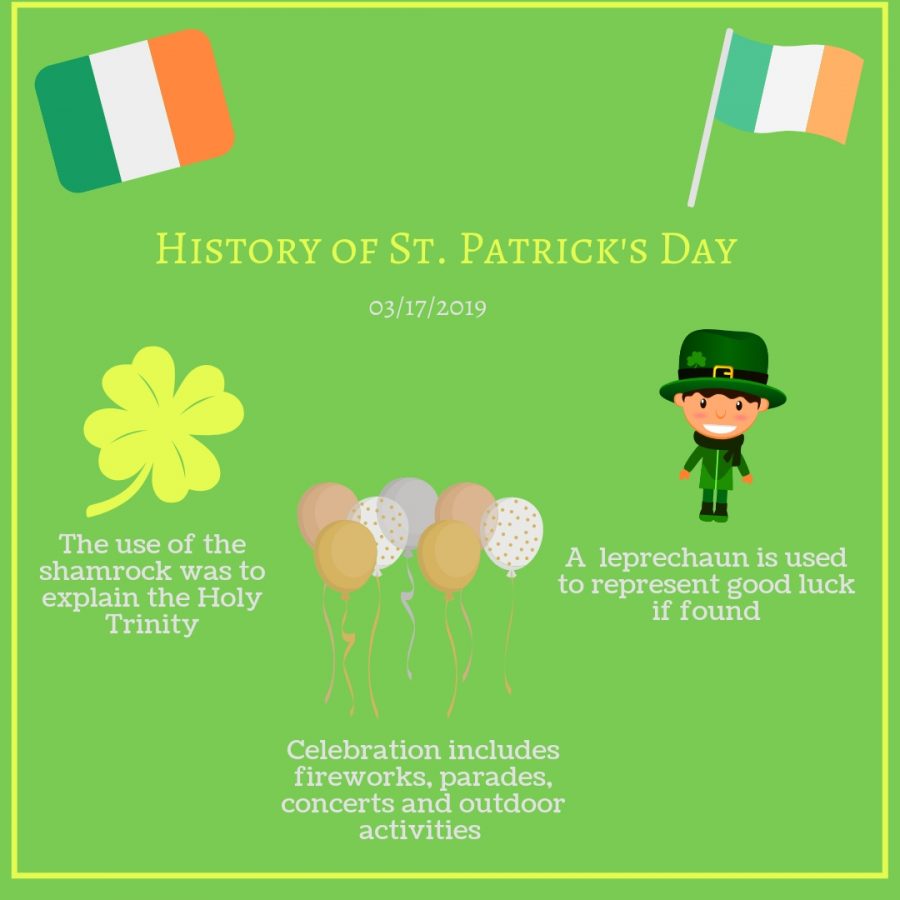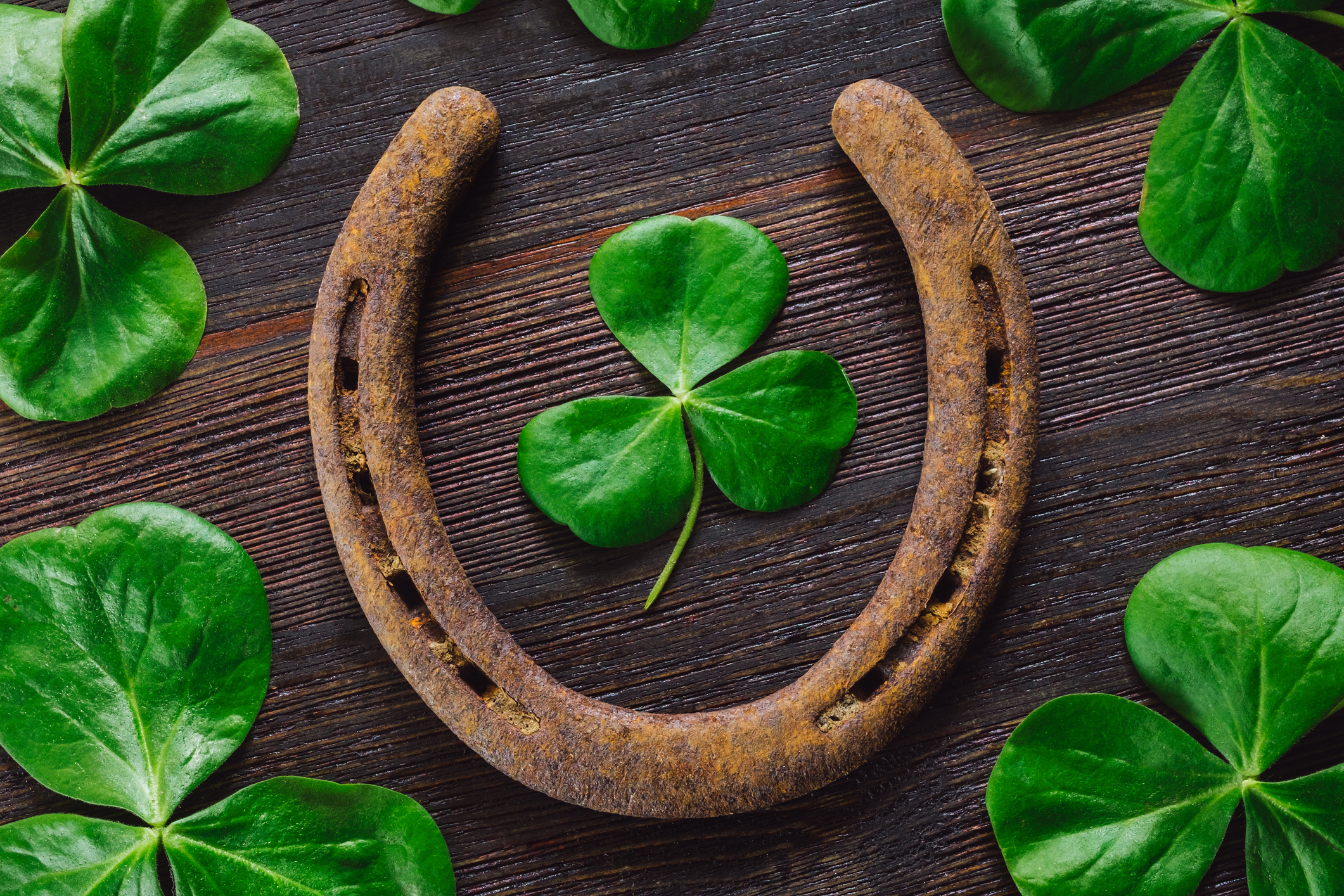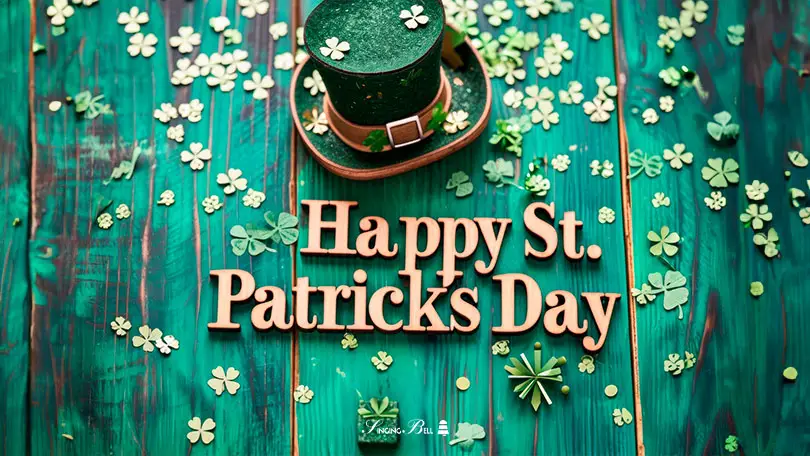By the 1930s, the custom of wearing green on St. Patrick’s Day had become so widespread that even President Franklin D. Roosevelt, who was of Dutch ancestry, joined in.An article published on St. Patrick’s Day usually conjures images of partying, Catholicism, Irish nationalism and, perhaps most famously, the color green: green clothes, green shamrocks, green beer and green rivers. Wearing green. When you think about St. Patrick’s Day, you likely think of the color green. However, the original color associated with St. Patrick was blue, since it was the color of the Irish flag, said Country Living. The transition from blue to green came from the Irish Rebellion of 1798. According to History.com, St. Patrick's Day has been celebrated since the ninth or 10th century. The first St. Patrick's Day parade occurred on March 17, 1601, in St. Augustine, Florida. The origins of the wearing of green clothing in the U.S. on St. Patrick’s Day and for St. Patrick’s Day celebrations in general date back to the 19th century, when waves of Irish immigrants Happy St. Patrick's Day Quotes and Messages; Because St. Patrick’s Day falls during Lent, it became a day for Christians to take a break from the abstinence practiced during the weeks leading up to Easter. By the 1700s, the holiday had started to take a decidedly more festive turn than its founders had intended. But the color that people originally associated with St. Patrick was blue! (Some ancient Irish flags even sport this color.) Green was finally introduced to St. Patrick’s Day festivities in the 18th century, when the shamrock (which is, of course, green) became a national symbol. St. Patrick’s Day, celebrated every March 17th, is associated with the color green, a tradition that has a rich and colorful history. Why we wear green on St. Patrick’s Day: The tradition of wearing green on St. Patrick’s Day is tied to Ireland’s nickname, “The Emerald Isle,” and its green-striped national flag. Why do we wear green on St. Patrick's Day? Wearing green on the holiday was loosely tied to Saint Patrick, but a more direct symbol of the patron saint of Ireland was the three-leaf shamrock. The St. Patrick's Day celebrations we recognize today are actually a product of Irish immigrants in America. Parades sprung up in major U.S. cities in the 1700s, including Boston and New York City. The Truth About St. Patrick’s Day’s Green Beer—It’s Not Irish at All!🍺 Crazy4Beer Merch: The St. Patrick's Day celebrations we recognize today are actually a product of Irish immigrants in America. Parades sprung up in major U.S. cities in the 1700s, including Boston and New York City. St. Patrick’s Day is a global celebration of Irish culture that takes place annually on March 17, the anniversary of the patron saint of Ireland's death in the fifth century. The holiday has Why Wear Green on St. Patrick's Day? Green was not the first color associated with St. Patrick, so just how did green come to represent the holiday? Citation Information There are at least three others: The South Side Irish St. Patrick’s Day Parade, Northwest Side Irish St. Patrick’s Day Parade and Chicago Working Families’ Archer Ave. St. Patrick’s Day Parade. All four parades take place the same weekend this year. And there have been even more St. Patrick’s Day parades throughout history. Wearing green on St. Patrick’s Day actually comes from 18th century Ireland, when Irish people made green a symbol of Irish rebellion and nationalism under Britain’s rule. Wearing green on the The St. Patrick's Day celebrations we recognize today are actually a product of Irish immigrants in America. Parades sprung up in major U.S. cities in the 1700s, including Boston and New York City. St. Patrick's Day 2024: Luck of Irish not needed to save some green on St. Patrick's Day food and drink deals. Why is St. Patrick's Day celebrated on March 17? March 17 is the day St. Patrick is Shamrocks, green clothing and a trip to a pub for a pint of Guinness. The bold may even put on a "Kiss me, I'm Irish" shirt. For many of us, St. Patrick's Day boils down to the tropes. While St The St. Patrick's Day celebrations we recognize today are actually a product of Irish immigrants in America. Parades sprung up in major U.S. cities in the 1700s, including Boston and New York City.
Articles and news, personal stories, interviews with experts.
Photos from events, contest for the best costume, videos from master classes.
 | |
 |  |
 |  |
 |  |
 |  |
 |  |